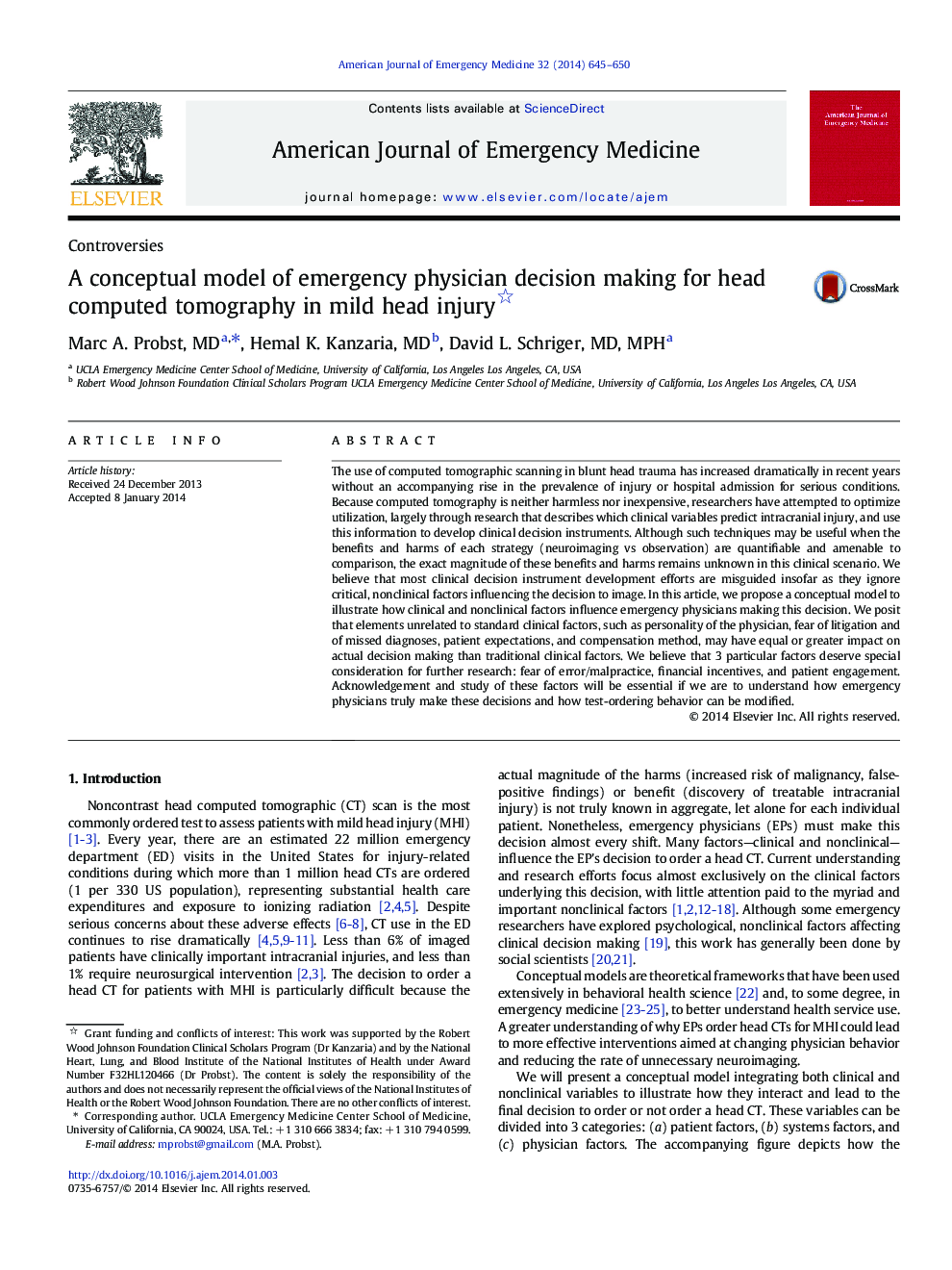| Article ID | Journal | Published Year | Pages | File Type |
|---|---|---|---|---|
| 3225065 | The American Journal of Emergency Medicine | 2014 | 6 Pages |
The use of computed tomographic scanning in blunt head trauma has increased dramatically in recent years without an accompanying rise in the prevalence of injury or hospital admission for serious conditions. Because computed tomography is neither harmless nor inexpensive, researchers have attempted to optimize utilization, largely through research that describes which clinical variables predict intracranial injury, and use this information to develop clinical decision instruments. Although such techniques may be useful when the benefits and harms of each strategy (neuroimaging vs observation) are quantifiable and amenable to comparison, the exact magnitude of these benefits and harms remains unknown in this clinical scenario. We believe that most clinical decision instrument development efforts are misguided insofar as they ignore critical, nonclinical factors influencing the decision to image. In this article, we propose a conceptual model to illustrate how clinical and nonclinical factors influence emergency physicians making this decision. We posit that elements unrelated to standard clinical factors, such as personality of the physician, fear of litigation and of missed diagnoses, patient expectations, and compensation method, may have equal or greater impact on actual decision making than traditional clinical factors. We believe that 3 particular factors deserve special consideration for further research: fear of error/malpractice, financial incentives, and patient engagement. Acknowledgement and study of these factors will be essential if we are to understand how emergency physicians truly make these decisions and how test-ordering behavior can be modified.
